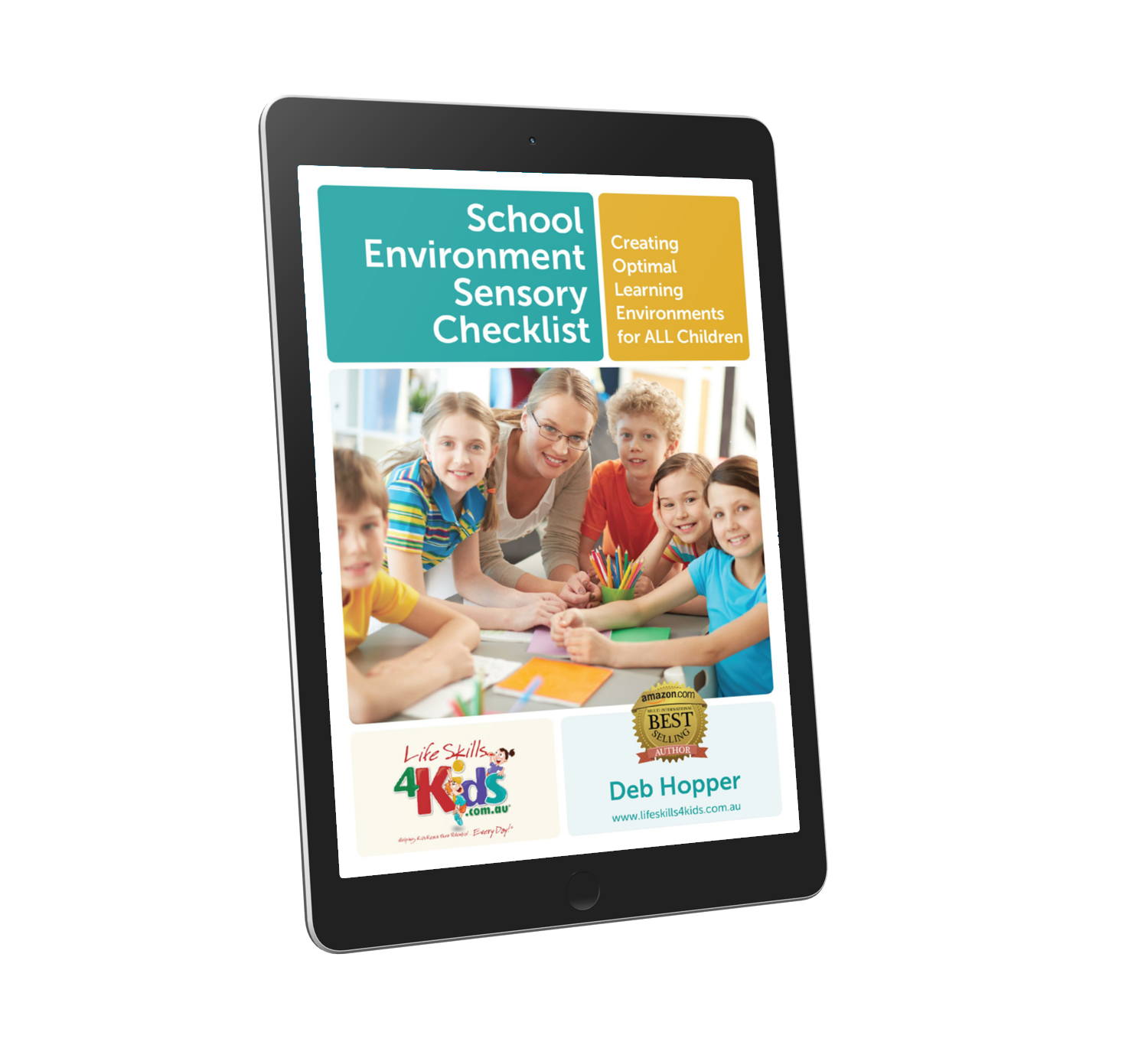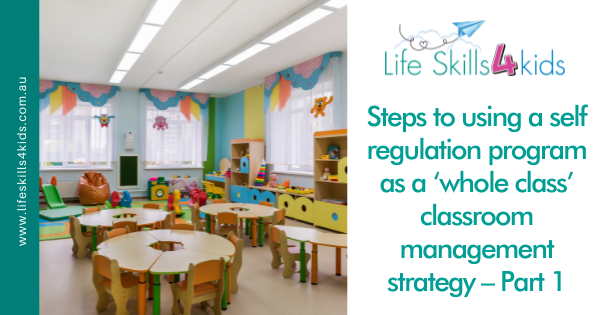Teaching children about their emotions and how to manage them in a school environment is a complex and long range task. All children need to learn these skills, but often in a classroom there are a cluster of at least 5-6 students who would benefit from learning how to be more self aware, noticing how they are feeling and being able to communicate that to others, and then knowing the strategies for what to do to help them self regulate and keep calm or in the just right zone for learning. It is for this reason that a ‘whole class’ or even better a ‘whole school’ approach to self regulation is ideal as a best practice model.
This week I’ve been asked to introduce and implement a whole class and whole school approach to teaching self regulation in a local school. This school is small, with only 3 classes, so it’s a little easier to plan and do than a very large school (but which I’d be very happy to do when the chance arises).
Introducing a self regulation program for individual children is really easy, as you can tailor the needs to the child and the parent, but what do you need to consider as a whole class approach and how do you get started on a bigger project for a whole class?
- Consult, consult, consult.
As a therapist going into a school, it’s really important to understand that by being invited into a teacher’s classroom, or a whole school, it is like walking into a teacher’s living room or office nook. It’s a very personal space and it’s important to be mindful of this. Teacher’s work in their classrooms every day and have particular reasons for how and why things are set up a certain way as well as putting their personal mark in creating their learning environment.
For this reason, I make sure that I have a good rapport with the teachers, understand a little about their teaching style, how they interact with their class and make sure that I create a strong connection with them.
Make sure that they have your phone number and email and invite them to give you feedback, to contact you if things go well or not so well. Be a team player.
Ask them what programs or strategies they have tried in the past. Ask them what works or doesn’t seem to work. Keep asking questions and try and really get a sense of what the underlying issue might be and what small changes might make a massive difference.
- Decide on a visual and program model for teaching self regulation and emotional regulation concepts
We talked a little about this in our previous blog on planning classroom management strategies.
Using visuals in the classroom can be a really effective way of supporting self regulation skills, behaviour management programs and promoting emotional regulation.
So when planning for a whole class self regulation program, there are a number of programs that we can draw from including:
- The Alert Program – The Alert Program is one of the original self regulation programs and underpins the more recent ones listed below. It teaches kids about their body being “high” or “low” or “just right” state of alertness.
- The Zones of Regulation Program – I feel that the Zones of Regulation Program builds onto The Alert Program and adds another layer for the older children and has a great manual with printables which focuses on a more cognitive approach.
- The Just Right Kids Model – The Just Right Kids Model is an Australian-based model which builds on the other models, but it separates the concepts of how busy or fast my body is going and the emotions, which is a different layer to the above two programs. Developed by Deb Hopper, Occupational Therapist it is a great model for older kids and for kids who are on the autism spectrum who really like to be specific about how they are feeling.
Personally, I find that a combination of these programs and concepts is needed to tailor make the right approach for a specific classroom, teaching style or the needs or understanding of the children who will be using this program.
- Collaborate with the school team on how to implement and start training teachers, and the stages of rollout.
Collaboration can be done as a whole school team, or with individual classrooms teachers, depending on what has been requested. It’s important to collaborate with the Principal and stage leader teachers if it’s a bigger school, as well as the individual teachers.
If a particular classroom as been identified as a trial, it is still really important to educate the wider school so that teachers across the school have a basic idea of what is being trialled, the rationale and the basic concepts. This is so that when other teachers are filling in, or supporting children on the playground, that children can be supported with the language of the program not just in the classroom but in the playground, at recess or lunch or in assembly or other larger school activities.
Having the whole school aware of the stages of the rollout is really important so that expectations are managed from both sides.
In all stages of trialling and implementing a self regulation program in a school for the first time includes lots of consultation and collaboration.
In creating change, we need to all make an effort to be on the same page, be willing to try new concepts and programs and be open to constructive feedback and to make changes. At times there is tension between the school system and the therapy systems who might suggest these changes.
Let’s continue to nurture relationships between all sides of the school and therapy systems. We have a common goal – to support, nurture and enhance learning for all students. We CAN work together and we CAN learn mountains from each other through active collaboration.
Good luck! I’m looking forward to my next roll out over the next few months in my new school!
School Environment Sensory Checklist (eBook)
Do you have children in your class who struggle with autism, learning difficulties or reduced concentration? Then the School Environment Sensory Checklist (SESC) is your entry into transforming your classroom!
Quickly and easily evaluate your classroom from a sensory perspective to enhance learning needs of all children, including children with autism and learning difficulties.
Have less distracted children who listen for longer and enjoy times of focused learning and easier transitions. Whether you are a newly qualified teacher or have many years experience, the School Environment Sensory Checklist (SESC) will refresh your vision for your classroom!


